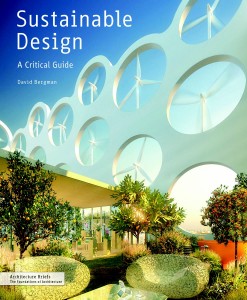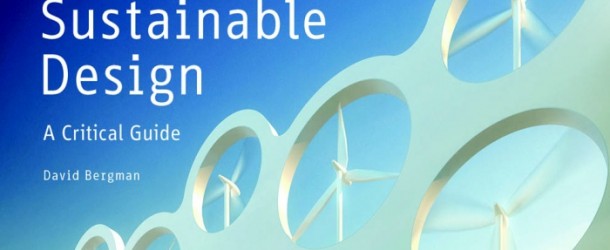 I was Johnny-on-the-spot when Chic Vegan was offered the chance to review Sustainable Design: A Critical Guide by David Bergman. Sustainab….what, you may ask? And what does this have to do with being a ChicVegan?
I was Johnny-on-the-spot when Chic Vegan was offered the chance to review Sustainable Design: A Critical Guide by David Bergman. Sustainab….what, you may ask? And what does this have to do with being a ChicVegan?
Those of you who made your way down the vegan path for environmental reasons may be familiar with sustainable design and construction. But for those of you who came to the vegan way from other directions, this may be a new concept. Sustainable design is about approaching building construction from an environmentally-friendly and sustainable perspective. Did you know –
Buildings consume 48% of the energy used in the United States and contribute 46% of the carbon dioxide production (CO2 levels are attributed to increased climate change)?
If you think about it, buildings and the places on which they are situated use a lot of resources – water, land, construction materials, and so on. It stands to reason that looking to build smarter and more sustainably is good sense and good for the environment. We’ll all pretty familiar by now with the thinking that using less resources or being wise about their use will help us, and the earth, in the long-run. This theory is essentially the definition of sustainability.
I was a treehugger before I was a vegan, so I’ve had time to study up on these topics. I also work with city planning and building as part of my job, so I’ve really had the opportunity for some education in this arena. In fact, I’m a Leadership in Energy and Environmental Design (LEED) Accredited Professional. Hence, my interest in checking out this book. But if you’re new to these ideas, Sustainable Design is a great introduction. Designed primarily as a guide for architecture professionals and students, the book is still accessible for those of us who aren’t architects or who want to learn more about the topic.
 The book starts out with the basics of what the author terms ecodesign, and then covers a variety of topics closely related to the LEED categories, which is a rating system for evaluating the sustainability of buildings. Site issues, water efficiency, energy efficiency: passive techniques, energy efficiency: active techniques, indoor environmental quality, and materials are all addressed in good depth, but still in a concise format. The chapters are presented in a format that I think of as “architect” books, but have a good mix of photographs and illustrations to elaborate upon the written concepts.
The book starts out with the basics of what the author terms ecodesign, and then covers a variety of topics closely related to the LEED categories, which is a rating system for evaluating the sustainability of buildings. Site issues, water efficiency, energy efficiency: passive techniques, energy efficiency: active techniques, indoor environmental quality, and materials are all addressed in good depth, but still in a concise format. The chapters are presented in a format that I think of as “architect” books, but have a good mix of photographs and illustrations to elaborate upon the written concepts.
If you’re looking for detailed information on how to accomplish ecodesign strategies, then this book isn’t for you. But if you want to learn the general concepts behind ecodesign and sustainable construction, then this is a good place to start. The author wraps up by evaluating the various rating systems for ecodesign (LEED isn’t the only one), and the future of the sustainable design and construction.
The author shares some amazing structures, still in design phase or already built, that embody ecodesign concepts. Local and state authorities, and even the federal government, are increasingly requiring buildings to be built to a green rating system, so it’s good to be aware of the practice and what’s out there.
And how does this relate to being a ChicVegan, exactly? There is a natural connection between environmental issues and being vegan. By nature, vegans are a compassionate, empathetic bunch, and that logically extends to compassion and empathy for our home, planet Earth. Learning about sustainable design and ways to reduce our impacts through our home, work, and play spaces seems like a perfect follow-through to make as a vegan.
One of my favorite passages of the book challenges designers to consider sustainability as more than “continuing to exist” and instead think about larger concepts of human fulfillment regarding community, spirit, and intellect. Bergman asks,
“[H]ow does design enable us not merely to sustain but to flourish?”
I love this extension of sustainability, which I hadn’t heard before. Asking how we can flourish is a beautiful question, and as vegans, I think we are on the right path!
